Chapter: 11th Microbiology : Chapter 4 : Sterilization
Sterilization by Filtration
Sterilization by Filtration
Filtration is an effective and reasonably economical method of
sterilization. It is used to sterilize heat-sensitive fluids, and air. It is
particularly useful for solutions containing toxins, enzymes, drug, serum and
sugars. Sugar solutions used for the cultivation of microorganisms tend to
caramelise during autoclaving and so they are best sterilized by filtration.
Filtration is also used extensively in beer and wine industries. Filters with
known pore sizes which are sufficiently small to hold back bacteria are
employed. Recently filters that can remove viruses are also available.

Filtration is an excellent way to remove the microbial
population from solution containing heat sensitive material.
There are two types of filters namely (Figure 4.4):
1.
Membrane filter (surface filtration) and
2.
Depth filter
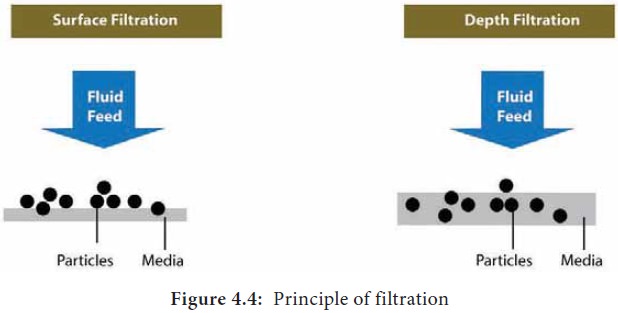
Membrane filters
Membrane filtration is used for preparing heat-labile culture
media components. It
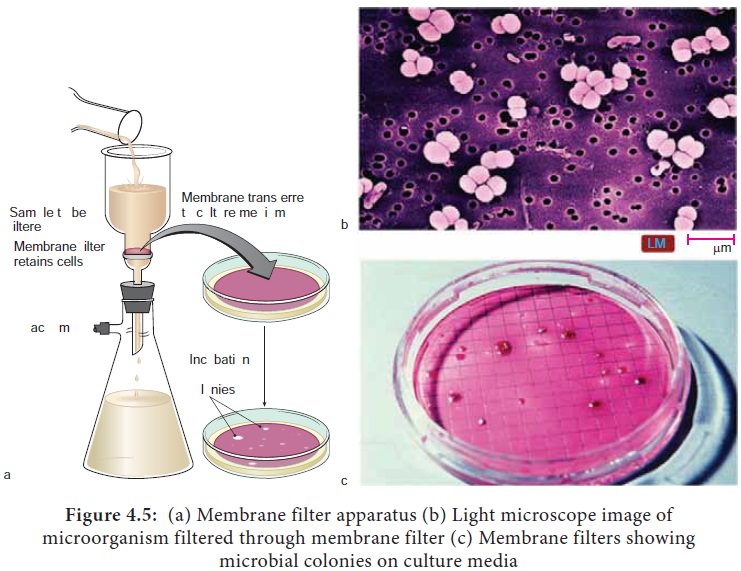
Membrane filters are made up of either cellulose acetate,
cellulose nitrate, polycarbonate, polyvinylidene fluoride or other synthetic
porous materials. These filters remove microorganisms by screening them out,
such as a sieve separates large sand particles from small ones. Membranes with
pore size of 0.2μm in diameter are used to remove most vegetative cells but not
viruses. These filters are used to sterilize pharmaceutical products,
ophthalmic solutions, culture media, oils, antibiotics, and other heat
sensitive solutions (Figure 4.5a, b & c).
Depth filters
Depth filters are the oldest type of filters and they consist of
overlapping layers of fibrous sheets of paper, asbestos or glass fibers. The
overlapping fibers create
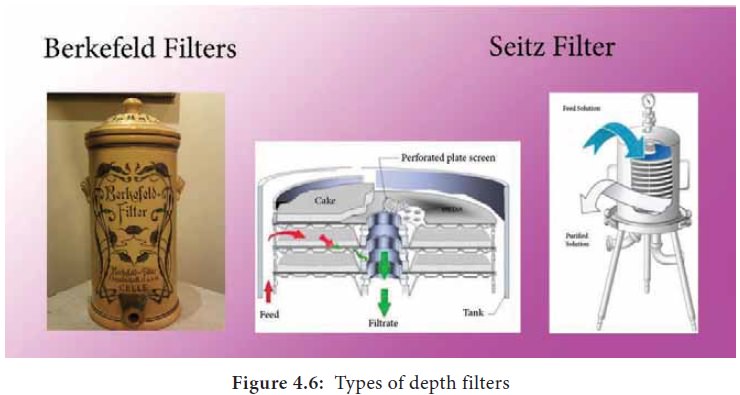
Depth
filter are made up of diatomaceous earth (Berkefeld filters) which are used as
water purifiers. Examples of types of depth filters (Figure 4.6) contains
unglazed porcelain (Chamberl and filters) and asbestos (Seitz Filter).
Air filtration
Air also can be sterilized by filtration.
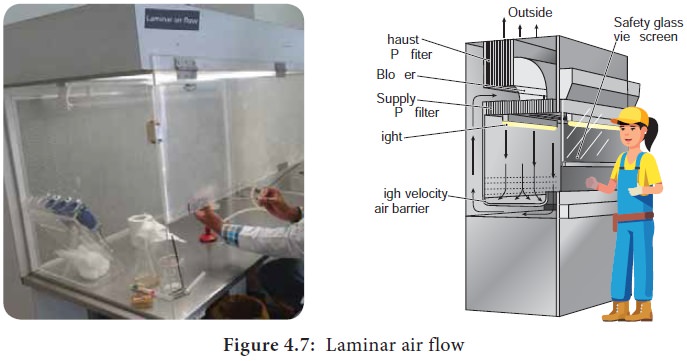
The air is freed from infection by passing it through High
Efficiency Particle Arrester (HEPA) filter. Laminar air flow biological safety
cabinets are one of the most important air filtration systems (Figure 4.7). It
employes HEPA filters which remove 99.97% of 0.33μm particles size. Some
operation theaters and rooms occupied by burn patients receive filtered air to
lower the numbers of airborne microbes. HEPA filters remove almost all microorganisms
above 0.3μm in diameter.
Various physical methods of sterlization is summarized in Table
4.2
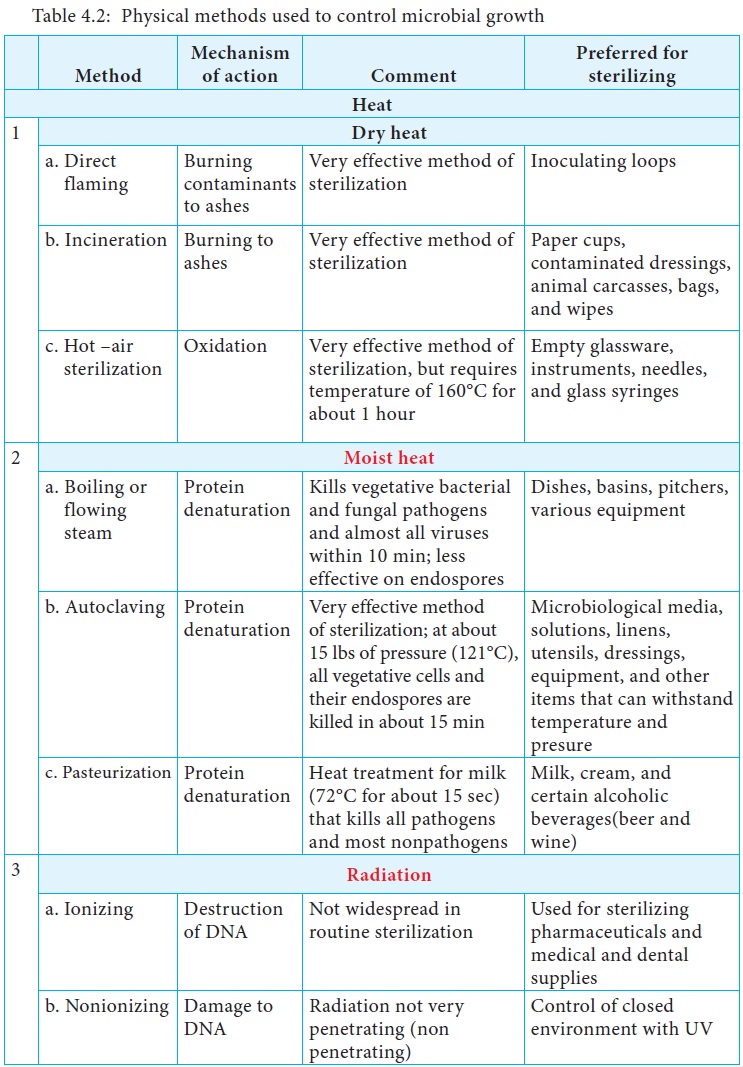
Related Topics